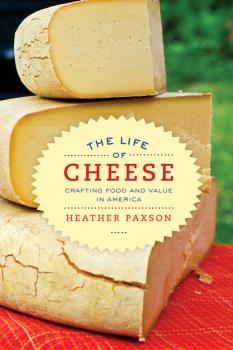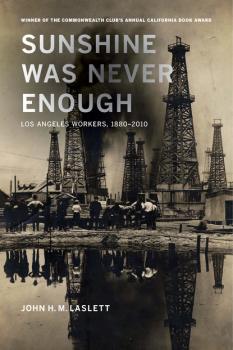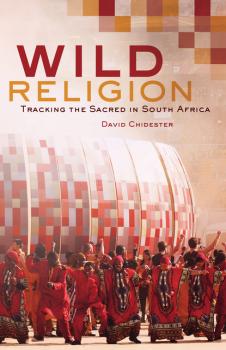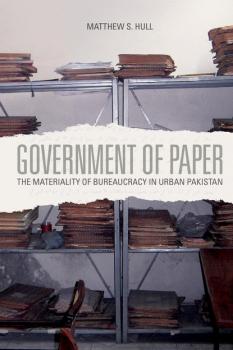ТОП просматриваемых книг сайта:
ЛИТМИР - LITMIR.BIZ - Электронная библиотека
Скачивание или чтение онлайн электронных книг.Аннотация
Cheese is alive, and alive with meaning. Heather Paxson’s beautifully written anthropological study of American artisanal cheesemaking tells the story of how craftwork has become a new source of cultural and economic value for producers as well as consumers. Dairy farmers and artisans inhabit a world in which their colleagues and collaborators are a wild cast of characters, including plants, animals, microorganisms, family members, employees, and customers. As «unfinished» commodities, living products whose qualities are not fully settled, handmade cheeses embody a mix of new and old ideas about taste and value. By exploring the life of cheese, Paxson helps rethink the politics of food, land, and labor today.
Аннотация
An artist paints landscapes of faraway places that she cannot identify in order to find her place in the global economy. A migrant worker sorts recyclables and thinks deeply about the soul of his country, while a Taoist mystic struggles to keep his traditions alive. An entrepreneur capitalizes on a growing car culture by trying to convince people not to buy cars. And a 90-year-old woman remembers how the oldest neighborhoods of her city used to be.<BR /><BR /> These are the exciting and saddening, humorous and confusing stories of utterly ordinary people who are living through China's extraordinary transformations. The immense variety in the lives of these Chinese characters dispels any lingering sense that China has a monolithic population or is just a place where dissidents fight Communist Party loyalists and laborers create goods for millionaires.<BR /><BR /><I>Chinese Characters </I>is a collection, as Pankaj Mishra writes in his foreword, "to herald a new golden age of journalism about a ceaselessly fascinating country." Contributors include a Pulitzer Prize winning journalist, a Macarthur Fellow, the China correspondent to a major Indian newspaper, and scholars whose depth of understanding is matched only by the humanity with which they treat their subjects. Their stories together create a multi-faceted portrait of a country in motion and an introduction to some of the best writing on China today.<BR /><BR /><B>With contributions from: </B>Alec Ash, James Carter, Leslie T. Chang, Xujun Eberlein, Harriet Evans, Anna Greenspan, Peter Hessler, Ian Johnson, Ananth Krishnan, Christina Larson, Michelle Dammon Loyalka, James Millward, Evan Osnos, Jeffrey Prescott, Megan Shank<BR />  
Аннотация
Known for their striking full-body tattoos and severed fingertips, Japan's gangsters comprise a criminal class eighty thousand strong–more than four times the size of the American mafia. Despite their criminal nature, the yakuza are accepted by fellow Japanese to a degree guaranteed to shock most Westerners. <i>Yakuza</i> is the first book to reveal the extraordinary reach of Japan's Mafia. Originally published in 1986, it was so controversial in Japan that it could not be published there for five years. But in the west it has long served as the standard reference on Japanese organized crime and has inspired novels, screenplays, and criminal investigations. This twenty-fifth anniversary edition tells the full story or Japan's remarkable crime syndicates, from their feudal start as bands of medieval outlaws to their emergence as billion-dollar investors in real estate, big business, art, and more.
Аннотация
Delving beneath Southern California’s popular image as a sunny frontier of leisure and ease, this book tells the dynamic story of the life and labor of Los Angeles’s large working class. In a sweeping narrative that takes into account more than a century of labor history, John H. M. Laslett acknowledges the advantages Southern California’s climate, open spaces, and bucolic character offered to generations of newcomers. At the same time, he demonstrates that—in terms of wages, hours, and conditions of work—L.A. differed very little from America’s other industrial cities. Both fast-paced and sophisticated, <i>Sunshine Was Never Enough </i>shows how labor in all its guises—blue and white collar, industrial, agricultural, and high tech—shaped the neighborhoods, economic policies, racial attitudes, and class perceptions of the City of Angels.<br /><br />Laslett explains how, until the 1930s, many of L.A.’s workers were under the thumb of the Merchants and Manufacturers Association. This conservative organization kept wages low, suppressed trade unions, and made L.A. into the open shop capital of America. By contrast now, at a time when the AFL-CIO is at its lowest ebb—a young generation of Mexican and African American organizers has infused the L.A. movement with renewed strength. These stories of the men and women who pumped oil, loaded ships in San Pedro harbor, built movie sets, assembled aircraft, and in more recent times cleaned hotels and washed cars is a little-known but vital part of Los Angeles history.<br /><br />
Аннотация
The UC Natural Reserve System, established in 1965 to support field research, teaching, and public service in natural environments, has become a prototype of conservation and land stewardship looked to by natural resource managers throughout the world. From its modest beginnings of seven sites, the UC NRS has grown to encompass more than 750,000 wildland acres. This book tells the story of how a few forward-thinking UC faculty, who’d had their research plots and teaching spots destroyed by development and habitat degradation, devised a way to save representative examples of many of California’s major ecosystems. Working together with conservation-minded donors and landowners, with state and federal agencies, and with land trusts and private conservation organizations, they founded what would become the world’s largest university-administered natural reserve system—a legacy of lasting significance and utility.<br /><br />This lavishly illustrated volume, which includes images by famed photographers Ansel Adams and Galen Rowell, describes the natural and human histories of the system’s many reserves. Located throughout California, these wildland habitats range from coastal tide pools to inland deserts, from lush wetlands to ancient forests, and from vernal pools to oak savannas. By supporting teaching, research, and public service within such protected landscapes, the UC NRS contributes to the understanding and wise stewardship of the Earth.<br /><br />
Аннотация
Living Color is the first book to investigate the social history of skin color from prehistory to the present, showing how our body’s most visible trait influences our social interactions in profound and complex ways. In a fascinating and wide-ranging discussion, Nina G. Jablonski begins with the biology and evolution of skin pigmentation, explaining how skin color changed as humans moved around the globe. She explores the relationship between melanin pigment and sunlight, and examines the consequences of rapid migrations, vacations, and other lifestyle choices that can create mismatches between our skin color and our environment.Richly illustrated, this book explains why skin color has come to be a biological trait with great social meaning— a product of evolution perceived by culture. It considers how we form impressions of others, how we create and use stereotypes, how negative stereotypes about dark skin developed and have played out through history—including being a basis for the transatlantic slave trade. Offering examples of how attitudes about skin color differ in the U.S., Brazil, India, and South Africa, Jablonski suggests that a knowledge of the evolution and social importance of skin color can help eliminate color-based discrimination and racism.
Аннотация
Wild Religion is a wild ride through recent South African history from the advent of democracy in 1994 to the euphoria of the football World Cup in 2010. In the context of South Africa’s political journey and religious diversity, David Chidester explores African indigenous religious heritage with a difference. As the spiritual dimension of an African Renaissance, indigenous religion has been recovered in South Africa as a national resource. Wild Religion analyzes indigenous rituals of purification on Robben Island, rituals of healing and reconciliation at the new national shrine, Freedom Park, and rituals of animal sacrifice at the World Cup. Not always in the national interest, indigenous religion also appears in the wild religious creativity of prison gangs, the global spirituality of neo-shamans, the ceremonial display of Zulu virgins, the ancient Egyptian theosophy in South Africa’s Parliament, and the new traditionalism of South Africa’s President Jacob Zuma. Arguing that the sacred is produced through the religious work of intensive interpretation, formal ritualization, and intense contestation, Chidester develops innovative insights for understanding the meaning and power of religion in a changing society. For anyone interested in religion, Wild Religion uncovers surprising dynamics of sacred space, violence, fundamentalism, heritage, media, sex, sovereignty, and the political economy of the sacred.
Аннотация
Tibetan medicine has come to represent multiple and sometimes conflicting agendas. On the one hand it must retain a sense of cultural authenticity and a connection to Tibetan Buddhism; on the other it must prove efficacious and safe according to biomedical standards. Recently, Tibetan medicine has found a place within the multibillion-dollar market for complementary, traditional, and herbal medicines as people around the world seek alternative paths to wellness. <i>Healing Elements</i> explores how Tibetan medicine circulates through diverse settings in Nepal, China, and beyond as commercial goods and gifts, and as target therapies and panacea for biophysical and psychosocial ills. Through an exploration of efficacy – what does it mean to say Tibetan medicine «works»? – this book illustrates a bio-politics of traditional medicine and the meaningful, if contested, translations of science and healing that occur across distinct social ecologies.<br /><br /><br /><br />
Аннотация
In the electronic age, documents appear to have escaped their paper confinement. But we are still surrounded by flows of paper with enormous consequences. In the planned city of Islamabad, order and disorder are produced through the ceaseless inscription and circulation of millions of paper artifacts among bureaucrats, politicians, property owners, villagers, imams (prayer leaders), businessmen, and builders. What are the implications of such a thorough paper mediation of relationships among people, things, places, and purposes? <i>Government of Paper</i> explores this question in the routine yet unpredictable realm of the Pakistani urban bureaucracy, showing how the material forms of postcolonial bureaucratic documentation produce a distinctive political economy of paper that shapes how the city is constructed, regulated, and inhabited. Files, maps, petitions, and visiting cards constitute the enduring material infrastructure of more ephemeral classifications, laws, and institutional organizations. Matthew S. Hull develops a fresh approach to state governance as a material practice, explaining why writing practices designed during the colonial era to isolate the government from society have become a means of participation in it.
Аннотация
Violence has been a central feature of America’s history, culture, and place in the world. It has taken many forms: from state-sponsored uses of force such as war or law enforcement, to revolution, secession, terrorism and other actions with important political and cultural implications. Religion also holds a crucial place in the American experience of violence, particularly for those who have found order and meaning in their worlds through religious texts, symbols, rituals, and ideas. Yet too often the religious dimensions of violence, especially in the American context, are ignored or overstated—in either case, poorly understood. <i>From Jeremiad to Jihad: Religion, Violence, and America</i> corrects these misunderstandings. Charting and interpreting the tendrils of religion and violence, this book reveals how formative moments of their intersection in American history have influenced the ideas, institutions, and identities associated with the United States. Religion and violence provide crucial yet underutilized lenses for seeing America anew—including its outlook on, and relation to, the world.










